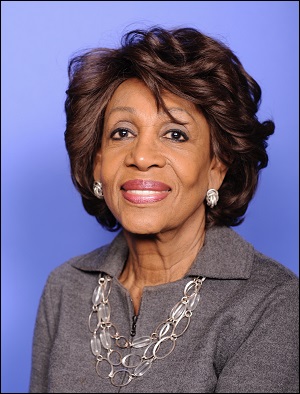By Pam Martens: February 26, 2019 ~

Congresswoman Maxine Waters
Yesterday, Congresswoman Maxine Waters of California, the Chair of the House Financial Services Committee, released the titles of the hearings she plans to hold during the month of March. Of the hearings held by this Committee in February, none addressed the systemic risk to the U.S. economy from the interconnected mega banks on Wall Street.
In 2015, OFR released an in-depth report on systemic mega bank risks that were still prevalent on Wall Street. The OFR researchers (Meraj Allahrakha, Paul Glasserman, and H. Peyton Young) wrote the following:
“The larger the bank, the greater the potential spillover if it defaults; the higher its leverage, the more prone it is to default under stress; and the greater its connectivity index, the greater is the share of the default that cascades onto the banking system. The product of these three factors provides an overall measure of the contagion risk that the bank poses for the financial system. Five of the U.S. banks had particularly high contagion index values — Citigroup, JPMorgan, Morgan Stanley, Bank of America, and Goldman Sachs.”
One of the reasons these five banks have such interconnectivity risk is that they are also the largest holders of insane levels of derivatives. According to the Federal regulator of national banks, the Office of the Comptroller of the Currency (OCC), as of September 30, 2018 these five bank holding companies held the following in notional (face amount) of derivatives: JPMorgan Chase $58.2 trillion; Goldman Sachs $56.2 trillion; Citigroup $55.7 trillion; Bank of America $36.4 trillion; and Morgan Stanley $33.3 trillion.
To put that systemic interconnectedness in perspective, the 25 largest banks engaged in derivatives held a total of $271 trillion notional amount as of September 30, 2018. Of those 25 banks, just the five listed above held 88 percent of the total. (See Table 2 at this OCC link.)

